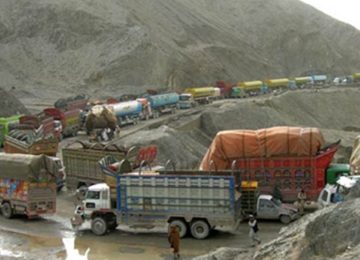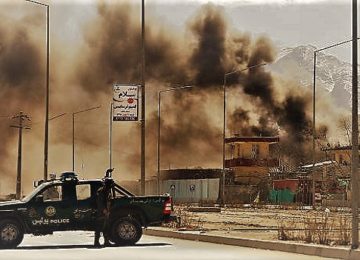October 28, 2019
By Zhou Shuai*
The history of China-Pakistan relationship is unprecedented. We Chinese see Pakistan as an all-weather strategic partner whereas common people term this bondage as brotherhood. This friendship has become more vital in terms of new development initiatives that aim to benefit the people from the entire region, especially the population of China and Pakistan. Therefore, it would be pertinently important for people across the borders to know more about the Belt and Road Initiative (BRI) as well as the challenges in the way of its functionality and how it could be improved and developed further.
BRI is the Silk Road of the 21st century. It is not a Chinese project only. We are trying to build it jointly with other stakeholders across the routes. Moreover, the project is about economics and not about the security or militaristic objectives. It is aimed to advance and enhance economic cooperation and every country including oceanic countries would get benefitted by it.
This dream initiative, I must underline, is based on two cardinal principles; firstly, we don’t want economic cooperation to be politicized. Secondly, Chinese foreign policy is based on non- interference in the domestic affairs of any country. It revolves around connectivity through infrastructures like roads and international ports for trade and financial connectivity. However, the most important thing is people to people connectivity. The economy is its second pillar and it caters not only to China’s economy but to that of the world. Community is its third pillar that depicts the approach of developing communities all along the routes.
It is also important to know that BRI is based on six economic corridors including the China-Pakistan Economic Corridor (CPEC), China-Mongolia-Russia Economic Corridor (CMREC) and Indo-China Peninsular Economic Corridor (ICPEC). The approach behind the project suggests that a big country like China, unlike the Western World, should take some responsibility for the world, through some public goods. Hence, the Belt and Road Initiative could be seen as a contributor to the public good. It not only offers networking with European and Asian continents but to every country as American and African countries may join it. The project is, in other words, not an exclusive product but an open one and we would welcome if the United States (US) also joined it.
However, BRI for its unprecedented potential faces some internal and external challenges that need to be amicably responded to. Among external challenges, the political chaos created by the Cold War era somehow still haunt various parts of the globe. For instance, our core philosophy says that we would live together peacefully, develop our economy and share peaceful lives. However, so much chaos still exists around the world. Afghanistan, Iraq, Ukraine, Syria are some examples.
The other challenge entails economic reasons that we witnessed the during 2007-2008 global financial crisis. It’s a reality that if a country’s economy fails its government cannot collect enough taxes. Thus, the public spending and infrastructure remain inadequate and such countries seem unable to improve lives of their people. Moreover, the presence of trade protectionism emerges as a serious issue keeping in view the principle that trade should be free.
Several misperceptions about China and the environment of the world economy also persist. This so-called threat really has some negative impact, and some neighbours also carry fear such as China will threaten their economy. However, such perceptions don’t hold any weight as China has no interest in controlling them. China believes that today we can resolve these issues through more connectivity and communication Like BRI.
Although, we can see a number of cooperation plans peddled by many countries but all of such initiatives are regional in their nature. On the contrary, China’s proposed Belt and Road Initiative is much broader as it also includes continental and oceanic countries. We all know about the existence of a Silk Road since ancient times that had been providing people with a source to exchange their culture, products and food. BRI could be seen just an extension of this arrangement with the inclusion of more countries to get benefitted from it.
In addition to the aforementioned external challenges, some internal factors also demand careful attention. While entering into a new phase of economic development, China has become the second-largest economy in the world. However, its GDP growth rate as well as the per capita growth rate has slowed down at the same time. Moreover, wages in China are also rising nowadays. The Chinese government is also determined to resolve issues such as the gap between the rich and the poor, excessive cost of housing and to meet the challenge resulted by ever-growing standards of living on one hand whereas inadequate development on the other.
China intends to come up with a reform policy in order to resolve these emerging issues as we need more infrastructure and must update our economic system to meet the new demands. As far as internal production capacity and corporation is concerned, China is aiming to build infrastructure and produce steel, coal, glasses and concrete. However, the other countries seem unable to build infrastructure due to lack of both money and materials. Hence, China wants to help such countries that need support in this regard.
Today, China has become the biggest oil importer and thus depends on other countries for external resources. These include oil and natural gas and the problem arises here because of dependence on seaways i.e. single-channel and we do not consider this heavy reliance on a single source is good for China. Therefore, our resources need diversification, which means we need to establish more channels. Hence, we see BRI as an initiative that ensures shared prosperity, love and peace for all stakeholders.
We can summarize the challenges for BRI as distrust shown by some countries that may have resulted due to lack of communication, imbalance in development and trade protectionism. With this comprehension, we believe that trust can be developed through people to people exchange and by setting clear rules before joining the BRI. China needs to promote BRI proactively by setting and presenting good examples and models to attract the countries to join it. Multi-lateral investments and corporations may lead the dream project BRI to turn into a reality.
*The writer is Lecturer at Beijing International Studies University, Beijing, China.








